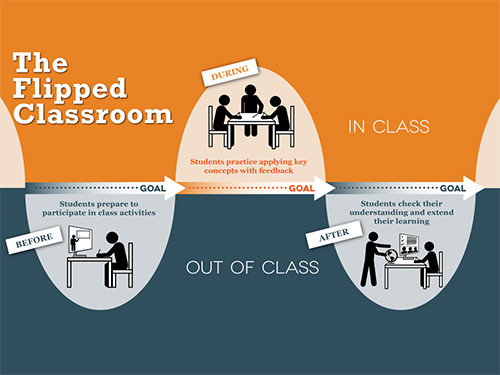
08 February 2021 – Osman Bedel –
Unlocking Learning Potential: The Power of the Flipped Classroom Model
Traditional classrooms have long followed a pattern where teachers deliver lectures during class time, and students practice and apply concepts on their own outside of class. However, the flipped classroom model flips this paradigm on its head. With the flipped classroom approach, students are introduced to new material outside of class through pre-recorded videos, readings, or online modules. Class time is then dedicated to interactive activities, collaborative discussions, and personalized support from the teacher. In this blog post, we will explore the concept of the flipped classroom, its benefits, and how it empowers students to take control of their learning journey.Understanding the Flipped Classroom Model
The flipped classroom model emphasizes active learning and student engagement by shifting the traditional lecture-based instruction to outside of class time. Students are given the opportunity to familiarize themselves with the new material independently, typically through pre-recorded videos, assigned readings, or interactive online modules. Class time is then dedicated to application, problem-solving, and discussions that allow students to deepen their understanding through active participation and collaboration.
Key Components of the Flipped Classroom Model
-
Pre-Learning: Students engage with new content independently before coming to class. This can be done through various mediums such as watching video lectures, reading assigned materials, or accessing online resources. By learning at their own pace, students have the opportunity to review and revisit concepts as needed.
-
In-Class Application: Class time is devoted to active learning and application of knowledge. Teachers facilitate discussions, hands-on activities, group work, and projects that encourage critical thinking, problem-solving, and deeper engagement with the material. This allows students to apply what they have learned, seek clarification, and engage in meaningful interactions with their peers and teachers.
-
Individualized Support: The flipped classroom model allows for more personalized attention from the teacher. With the teacher available during class time, students can seek guidance, ask questions, and receive immediate feedback on their understanding and progress. This individualized support helps address students’ specific learning needs and promotes a deeper understanding of the material.
Benefits of the Flipped Classroom Model
-
Student-Centered Learning: The flipped classroom puts students at the center of the learning process. They have the flexibility to learn at their own pace, review content as needed, and actively participate in class discussions and activities. This approach promotes a sense of ownership and responsibility for their learning, fostering intrinsic motivation and a lifelong love for learning.
-
Active Learning and Engagement: The flipped classroom model encourages active learning, collaboration, and critical thinking. In-class activities and discussions provide opportunities for students to apply their knowledge, engage in problem-solving, and explore real-world applications. This active engagement fosters deeper understanding and retention of concepts.
-
Individualized Attention: With the flipped classroom model, students have more direct access to the teacher during class time. This enables teachers to provide individualized support, address misconceptions, and offer tailored guidance to each student. The personalized attention helps students overcome challenges and ensures that their specific learning needs are met.
-
Flexibility and Differentiation: The flipped classroom allows students to learn at their own pace and access resources according to their individual needs. Advanced students can delve deeper into the content or explore additional resources, while those who require more time can review materials until they grasp the concepts. This flexibility enables differentiation and ensures that every student can progress and succeed.
-
Enhanced Collaboration and Communication: The flipped classroom promotes peer-to-peer interaction and collaboration. During in-class activities, students work together, engage in discussions, and learn from their peers. This collaborative environment cultivates communication skills, teamwork, and the ability to articulate and defend their ideas.
The flipped classroom model represents a shift in traditional teaching practices, empowering students to become active participants in their own learning journey. By engaging with new material outside of class and utilizing class time for application and collaboration, students develop critical thinking skills, engage in deeper learning experiences, and receive personalized support from their teachers. As we continue to evolve education, the flipped classroom model offers an effective and student-centered approach that unlocks the full potential of every learner.






